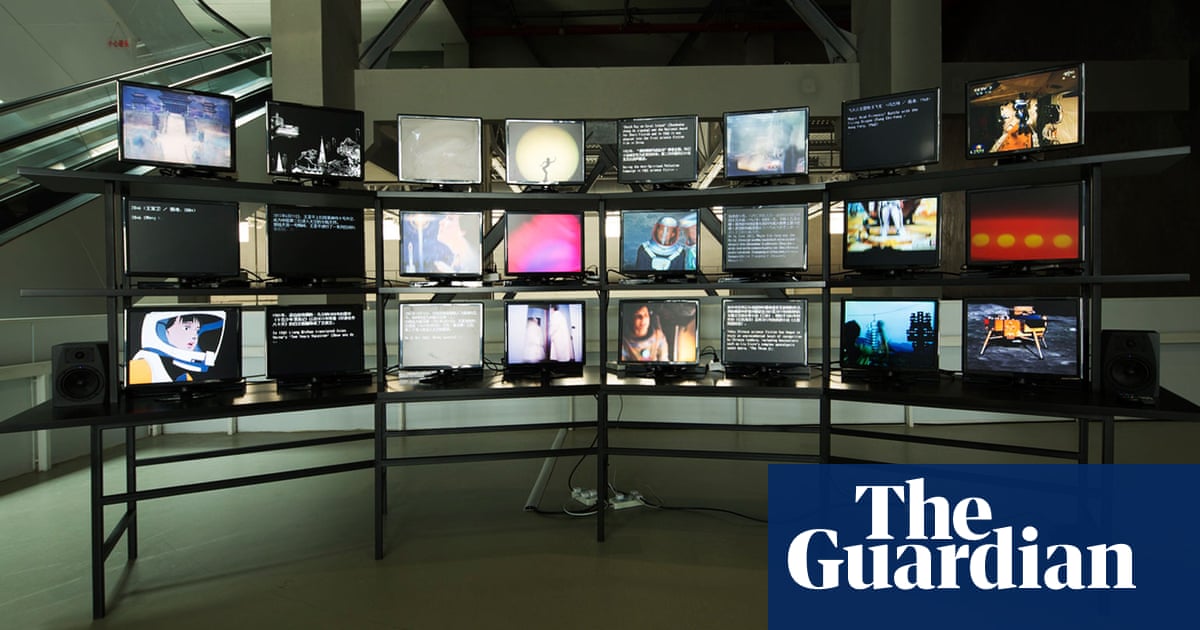
From its exterior, the industrial metal dome nestled in the woods outside Stony Point, New York, could be anything: perhaps someone is doing horticulture experiments, or maybe it’s secretly a yurt. Stepping inside would reveal a different surprise: Stan VanDerBeek’s Movie-Drome, an “experience machine” complete with both film and slide projectors blanketing the curved ceiling of the immersive, exuberant space with an array of color and black-and-white imagery. However, it was neither the dome or the content on its ceiling that made Movie-Drome an important development in 20th-century art – it was its unrealized connection to a global network of satellites that would beam data into Movie-Dromes around the world. As historian Felicity D Scott writes, it was “an expansion of the public sphere and tool of subjective modernization – part of a global development apparatus”.
The project was never realized in its totality, due to technological constraints of the 1960s, but fast forward to 2023 and we can see that this global network of information – delivered through interactive screens – has now taken over how we experience the world. These connections are the focus of a major exhibition at the Museum of Modern Art in New York. Titled Signals: How Video Transformed the World, the show examines the history of broadcast media not as simply experiments in film-making, but as a transformational media network – especially in the realm of social and political critique.
“History is being made and rewritten through video on a minute-to-minute basis. Artists have provided poetic and critical tools to navigate this emerging reality since the late 1960s,” Stuart Comer, chief curator of media and performance, said. “Now more than ever, we need to elevate the alternatives they have proposed and consider how the earliest chapter of video lives on powerfully in the urgent work being made today.”
Early experiments grew out of new technology – most poignantly the 1967 advent of the commercially sold Sony Portapak battery-powered camera – and a belief in the transformative potential of such technologies. But this positivity was tempered by an equal dose of skepticism, especially about the harmful effects of commercial media in the west. This tension produced a generation of “pirate” and “guerrilla” television programs, experimental, self-produced, and often produced by collectives with an activist slant.
Videofreex ran an illegal pirate television station at their compound in the Catskills and focused on the countercultural movement, producing programs such as Fred Hampton: Black Panthers in Chicago and Women’s Lib Demonstration NYC. Raindance Corporations’s Proto Media Primer provided instructions for users to make their own “guerrilla television”.
Moma held the seminal Open Circuits: An International Conference on the Future of Television in 1974, which brought together many of the key figures, galvanizing a community and marking the beginning of the museum’s video collection with acquisitions by Barbara London, then a Moma curator and pioneer in the field of video.
As video and its broadcasting networks developed, they began to usurp traditional spatial and political boundaries to infiltrate new territories with information. Nam June Paik’s live broadcast Good Morning, Mr Orwell, took place on New Year’s Day 1984 in New York and Paris, and was broadcast to Germany and Paik’s home country South Korea. Some 25 million people viewed the simulcast, which featured live and taped contributions from Laurie Anderson, Peter Gabriel, Joseph Beuys, Allen Ginsberg, Charlotte Moorman, John Cage and Oingo Boingo.
“Artworks like VanDerBeek’s Movie-Drome or Paik’s Orwell may pose a dream of global connectivity that didn’t get realized in the ways they thought it might,” curator of painting and sculpture Michelle Kuo said. “But these works still show us an alternate path, an experience that could still inspire new kinds of networks or connectivity in the present, even decades later.”
Like Paik, Gretchen Bender saw the potential of screens to reach large audiences in new places, and her 1990 installation TV Text Image was placed in a New York storefront window, a precursor to our current condition, where the public sphere takes place increasingly online and on screens; the physical world merged with the virtual.
Video, especially television, has popular appeal due to its format as well as its ability to reach large audiences in the millions. In the west, artists were mostly dealing with commercial TV, but in Asia and Latin America, they were often dealing with state media or government propaganda. Ravi Sundaram in his catalog essay Pirate Media, explains how when cheap video technologies reached India and other developing countries, they sent shockwaves through the population, and artists began making “pirate media”, a condition of what Sundaram calls “pirate modernity, a gray zone between urban informality and emergent media techniques”. By upending the hierarchies of media production, new publics were formed and traditional power structures challenged.
Although not operating in the context of a developing nation, we see this DIY, anti-authoritarian mentality in Tiffany Sia’s 29-minute Never Rest/Unrest video taken during the 2019 Hong Kong protests. Rather than splicing together spectacular moments like a news broadcast might, Sia instead took an intimate portrait of life during these protests.
The sprawling exhibition fills Moma’s top floor, offering a little something for everyone in its variety of installations – every room is different. The variety of material – collected over six decades – shows the myriad ways in which artists have used and misused video and its broadcast technologies to create their own networks, insert themselves in existing networks, and overtly resist or critique them.
Like nearly every other utopian impulse of the 1960s, however, these ideas have become co-opted and entwined into paradoxical and often dark ends such as online trolls weaponizing social justice to cancel their peers, or bad actors spreading misinformation to influence foreign elections. But perhaps even these darker corners of the internet do not define us, and Kuo hesitates to call it failure. “I think it reveals that utopian and critical impulses often exist with each other – and that what might be regarded as failure is actually often open-ended experimentation.”
Signals: How Video Transformed the World opens at the Museum of Modern Art in New York on 5 March and shows until 8 July












